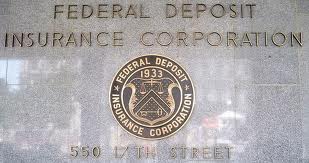Will the “too big to fail” banks that pose a systemic risk to the financial system ever be broken up?
If Thomas Hoenig, former Kansas City Fed president wins Senate nomination as the new Vice Chairman of the FDIC, the big banks may have a lot to worry about.
Mr. Hoenig should easily win Senate confirmation based on solid bipartisan support and that has a lot of executives at the big banks very worried. Mr. Hoenig, a consistent critic of the easy money printing policies of the Federal Reserve, has voiced his strong support for breaking up the biggest banks which he believes pose a risk to the U.S. financial system.
According to the Wall Street Journal, Mr. Hoenig thinks that the biggest banks in the country are so large that they represent a risk to the financial system and may ultimately need another taxpayer bailout.
Mr. Hoenig believes there is only one way to end this phenomenon of “too big to fail.” “We must break up the largest banks,” he said in a February speech, arguing that regulators could do so by restricting the activities of government-backed banks “and significantly narrowing the scope of institutions that are now more powerful and more of a threat to our capitalistic system than prior to the crisis.”
The enthusiasm for Mr. Hoenig, who is not affiliated with either party, comes at a time when politicians of both parties are trying to harness populist anger at Wall Street rather than get clobbered by it.
If confirmed, Mr. Hoenig would be in a position to actually try to force large financial firms to downsize. Under Dodd-Frank, complex financial firms must convince regulators at the FDIC and Fed they can be quickly and safely dismantled if they run into trouble. Each must draw up a road map showing regulators how to liquidate the firm if it starts to fail.
Regulators can ultimately force a firm to sell off parts of itself if they don’t believe a firm could be wound down without threatening others.
“I’m not against big…I’m against too big to fail,” Mr. Hoenig said. He said the burden would be on the institutions to show “they are manageable, that their risk will not impact the taxpayer in the future.”
Regulators have other sticks to use in forcing mega-firms to change in ways that would cost them dearly. These include stricter capital and leverage restrictions, and curbs on growth or particular activities. Regulators also have the power to block an acquisition if they think it would make the company too hard to wind down.
Big banks aren’t likely to find Mr. Hoenig sympathetic to their complaints that capital requirements are creeping too high and could choke economic growth. He has called such arguments “nonsense.”
Considering the fact that the Too Big To Fail Banks have become larger since the financial meltdown of 2008 and are still engaging in high risk activities such as derivatives trading, regulators should take aggressive steps to reduce the size of the biggest banks. Hopefully, Mr. Hoenig will not be stymied in his quest to bring the biggest banks down to size by the banking industry’s high paid and influential lobbyists.

Speak Your Mind
You must be logged in to post a comment.